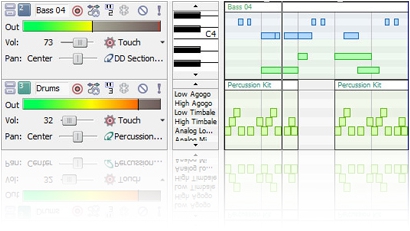Matematicheskaya Statistika I Ee Rolj V Medicine I Zdravoohranenii

The International School for Advanced Studies (SISSA) was founded in 1978 and was the first institution in Italy to promote post-graduate courses leading to a Doctor Philosophiae (or PhD) degree. A centre of excellence among Italian and international universities, the school has around 65 teachers, 100 post docs and 245 PhD students, and is located in Trieste, in a campus of more than 10 hectares with wonderful views over the Gulf of Trieste. SISSA hosts a very high-ranking, large and multidisciplinary scientific research output. The scientific papers produced by its researchers are published in high impact factor, well-known international journals, and in many cases in the world's most prestigious scientific journals such as Nature and Science. Over 900 students have so far started their careers in the field of mathematics, physics and neuroscience research at SISSA. We review recent progress in understanding the notion of locality in integrable quantum lattice systems.
The central concept concerns the so-called quasilocal conserved quantities, which go beyond the standard perception of locality.  Two systematic procedures to rigorously construct families of quasilocal conserved operators based on quantum transfer matrices are outlined, specializing on anisotropic Heisenberg XXZ spin-1/2 chain.
Two systematic procedures to rigorously construct families of quasilocal conserved operators based on quantum transfer matrices are outlined, specializing on anisotropic Heisenberg XXZ spin-1/2 chain.
Always 0.5 0.8 2014-07-07 always. 2014-07-13 always 0.7. Early Science and Medicine = Early Sci. Electrical Engineering and Electronics = Elec. Cyr Teoriya Veroyatnostey i Matematicheskaya Statistika.
Quasilocal conserved operators stem from two distinct classes of representations of the auxiliary space algebra, comprised of unitary (compact) representations, which can be naturally linked to the fusion algebra and quasiparticle content of the model, and non-unitary (non-compact) representations giving rise to charges, manifestly orthogonal to the unitary ones. Various condensed matter applications in which quasilocal conservation laws play an essential role are presented, with special emphasis on their implications for anomalous transport properties (finite Drude weight) and relaxation to non-thermal steady states in the quantum quench scenario. Export citation and abstract. Local conservation laws are amongst the most important fundamental concepts in theoretical physics. In generic systems these usually comprise energy, momentum, particle number, etc, and correspond to Noether charges connected to rather obvious physical symmetries. On the other hand, in systems which are exactly solvable, or integrable, the number of conservation laws and the corresponding conserved charges can be much larger and the underlying symmetries sometimes quite hidden. According to a widespread belief, integrability should provide us with a 1-to-1 correspondence between conserved charges and physical degrees of freedom.

However, such a definition is only really applicable—or unambiguous—in classical deterministic (Hamiltonian) systems with a finite number of degrees of freedom where it amounts to the historical, Liouville–Arnold integrability. Interacting quantum systems, where local degrees of freedom (quantum spins, fermions, or bosons) are arranged in a regular 1D lattice, are typically considered integrable in one of the following cases: Firstly, there may exist a canonical (Bogoliubov) transformation which maps the local degrees of freedom to non-interacting quasiparticles. 2000 kosakata bahasa korea pdf merger. Such is, for example, the situation with quantum transverse field Ising model, or XY spin-1/2 chain []. These systems, which are reducible to a single particle picture and are often referred to as quasi-free, shall not be of interest in this article, even though they allow for an illustration of some non-trivial many-body phenomena, such as area laws for entanglement []. Secondly, there exist systems exhibiting genuine interparticle interactions whose dynamics is representable in terms of quasi-particles which undergo non-diffractive scattering without particle production. A central feature in such a case is factorizability of an arbitrary multi-particle scattering process in terms of subsequent 2-particle scattering events, mathematically phrased in the form of the celebrated Yang–Baxter (or star-triangle) equation.
One of the most remarkable physical consequences of that mechanism is the emergence of a macroscopic number of local integrals of motion (conservation laws). One of these charges, usually the first one in the series, is considered as the Hamiltonian (with local interactions). Here locality means that the densities of these charges act non-trivially only on a finite number of adjacent lattice sites. Integrability in the sense of Yang and Baxter, which is universally understood within the framework of algebraic structures known as quantum groups [–], is perhaps the most general widely acceptable definition of integrability known to date. Besides defining and describing integrability in closed quantum many-body systems in 1D [], it also covers 2D equilibrium classical statistical systems [], nonequilibrium classical driven diffusive 1D systems [], as well as classical Hamiltonian systems [, ], and since more recently, also integrable nonequilibrium steady states of open quantum interacting systems []. In recent years, tremendous progress has been made in understanding a wide variety of nonequilibrium aspects of integrable systems, a considerable part being covered by a series of review articles appearing in the present volume [–]. However, interacting integrable quantum systems have been for quite some time no longer only of pure mathematical or theoretical interest.